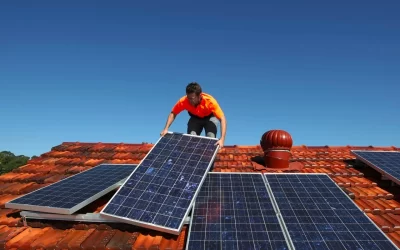The best position for solar panels is towards the south, but west and east-facing roofs can work too. A 30-degree angle is suitable for the best year-round solar production, but anywhere from 15 to 40 degrees can give you enough good energy production. If you have the space, a ground-mount system is another option to consider.
The more peak sunlight your home gets, the more solar energy it can generate. The general rule of thumb is that an average of four peak sun hours per day is enough sunlight to make a solar renewable energy system worthwhile.

Sunlight carries photons which is what the solar panels convert into electricity and both direct and indirect sunlight can be used to produce energy. Direct sunlight is best, but solar panels can still produce energy without it. They can work in the shade, during cloudy weather, in the rain, and while it snows as long as here are photons or “light”!
In summary, optimal energy production and performance of a solar system is best if your property has at least 4 hours of peak sunlight. However, electricity is still being generated with indirect sunlight There will be a drop in performance and less energy production if direct sunlight is not available, but electric current is still being generated, offering lots of possibilities for homes to potentially go solar. Throughout history, energy prices have risen. Going solar is becoming increasingly necessary for many property owners because the cost continues to go up and at bigger increases. Today, getting control of your electricity costs is becoming very important. You might consider what the cost of your electricity will be in 5 years if you do nothing!






